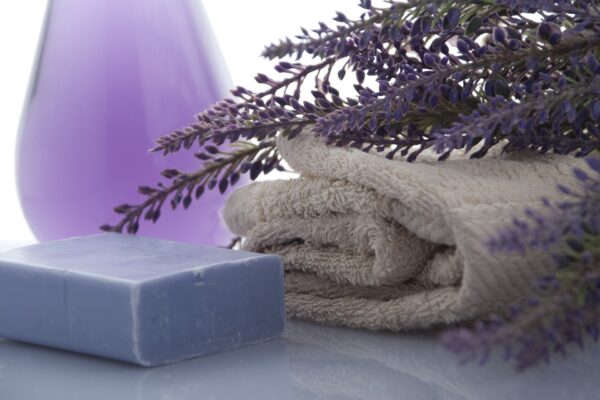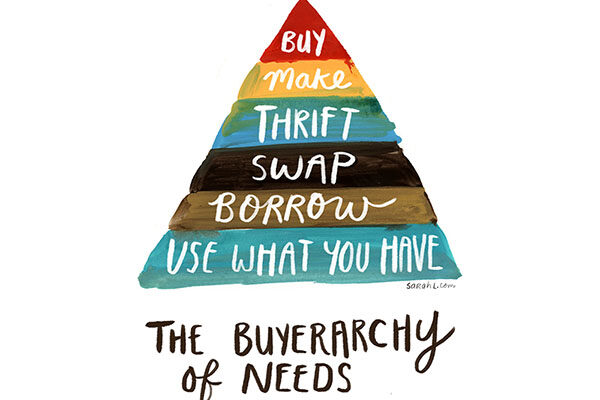
A complete wardrobe overhaul can be impractical, unnecessary (and completely IMPOSSIBLE) for most of us. However, there are some simple steps you can take today, to make your fashion more sustainable. These tips allow you to shop less, spend less, useless, while doing more for our planet.
- Build your wardrobe around neutral colours.
Neutral colours like black, shades of grey, white, tan, and even olive tones, bring longevity to your wardrobe. They are so versatile as they pair well with almost every other colour, really bumping up your mix and match game. Neutrals are an absolute wardrobe essential.
Neutrals are also less memorable so you don’t even have to worry if people will notice that you’ve worn the same navy blue pants twice (maybe thrice) this week. You might be more reluctant to wear that eye-catching orange dress more frequently.
Neutral-coloured clothing has a timeless quality as you rarely grow tired of them. You might be over that neon blazer by the end of the year but that black blazer is truly the gift that keeps on giving ;).
2. Create a basic wardrobe on foundation pieces (#wardrobestaples).
Trends come and go, but timeless pieces are sure to stand the test of time. Trendy clothing items are those we replace every year because they have gone out of style. Those that remain, are our timeless pieces – the foundations of our wardrobe that always look classic, chic, and make the trendier clothes look even better. Some of my must-have foundation pieces are listed below.
- Black turtleneck
- Blazer
- Straight-leg pants
- Pencil skirt
- White button-down shirt
- Black pumps
- Little black dress (LBD)
- White T-shirt
As a general rule when it comes to identifying timeless pieces – fitted is always in, and simple rocks!
3. Purchase high-quality clothing.
While neutrals offer versatility, high-quality clothing provides longevity, savings, and in many instances, a much better experience than lower-quality alternatives.
With fast fashion on the rise, clothing has gotten a lot cheaper at the expense of quality. We live in a culture of disposability – so much of the clothing isn’t built to last. Maybe you have seen one or two of these before – unravelling thread; underarm holes, hanging buttons, or even that once cute jersey dress that aged by three years after one wash. Hardly is it ever worth repairing these cheaper, less durable clothing, as they are often less costly to replace.
Well-made clothing of durable material often gives you more rotations than cheaper, less durable alternatives. And so, it is better to see your clothing as an investment. High-quality clothing may have a larger sticker price but gives you more wears and savings in the long run. You’re also less likely to be ashamed to wear them after two washes.
No. You don’t have to empty your bank accounts to fill your closet with high-quality clothing, but you may need to put in a little work. I’m constantly scouring the internet for deals and reading tons of reviews. In fact, when I’m at a physical clothing store, I always head straight to the back for the sales and clearance racks first. I can literally point out the pieces in my closet that I paid full price for.
4. Mix and Match
Mixing and matching is the perfect way to refresh your outfits and make the old seem new again and allows you to do more with less.
Mix and match is made easier when there are a lot of neutral-coloured pieces in your closet that are of high quality, with style that’s timeless. Before buying that next outfit that you think you need, FIRST, explore new ways to wear pieces you already have to create a brand new outfit.
5. Repurpose and repair old clothing.
Repair and repurpose are the hallmarks of sustainable fashion. Extending the life of your old clothing prevents unnecessary production, resource use and waste, which causes harm to the environment.
Engage in some DIY to bring your old clothes back to life – distress your old jeans, turn your basic tank into a crop, and your maxi into a mini. On top of getting new outfits out of your old wardrobe, it’s actually quite fun. Also, don’t be so quick to discard clothing with ruined zippers, missing buttons, ripped linings, or even damaged shoe soles. Instead, keep ‘em and mend ‘em.
6. Give second-hand items a try.
Brand consultant, Rachel Kibbe, for circularity and sustainability in fashion, told Insider, “the only true sustainable way to shop is to not shop at all.” She added, “unless you’re buying clothes that [already] exist. This is because second-hand clothing utilizes no additional resources beyond transportation, compared to new clothing (even those labelled “sustainably produced”).
As the desire among consumers to reduce their environmental impact grows, we are seeing the rise of used clothing retail stores. Online resale stores like thredUP and Poshmark have been growing in popularity, particularly among Millennials and Gen Zers (lemme know of local resale stores in your area). Not only do they see an opportunity to reduce their environmental impact, but can also take advantage of access to quality clothing from reputable brands, at significantly reduced prices. Why not check out your local resale stores today?!
For some of us who are not too keen on wearing used clothing from strangers, how about trading with friends and family. This is something I’ve been doing with my sisters and cousins for-like-EVER!!. We shop in each other’s closets, and nobody (apart from us) knows whether they’re old, borrowed or new.
For those of us in a hurry, here is a summary of all the sustainable fashion tips in this post:
- Build your wardrobe around neutral colours.
- Create a basic wardrobe on foundation pieces.
- Purchase high-quality clothing.
- Mix and Match.
- Repurpose and repair old clothing.
- Give second-hand items a try.
All of these tips are easy to follow and are great ways to help you make your wardrobe more sustainable. While some can be implemented today, others may take longer. BUT, by incorporating even just a few of these tips, you’ll be well on your way to building a wardrobe that is ethical and eco-friendly!


